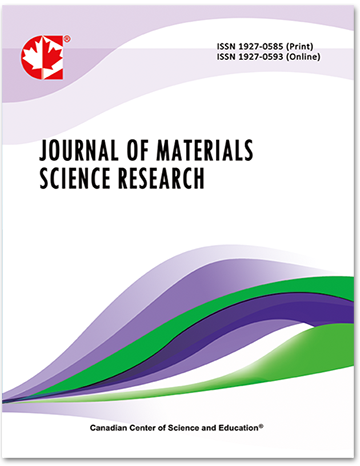Structural and Electronic Impact on Various Substrates of TiO2 Thin Film Using Sol-Gel Spin Coating Method
- Moniruzzaman Syed
- Tierney Crosby
- Marcus Frierson
- Miara Hurd
- Jamil Muhammad
- Brianna Taylor
- Taj Thompson
- Madihazaman Syeda
- Jolaikha Sultana
- Md Farhan Azim
Abstract
Titanium dioxide (TiO2) thin films have been deposited on Corning 7059 glass and Fused quartz silicate substrates using Sol-Gel spinning coating technique. The effect of annealing temperature on the structure, surface morphology, optical and electrical properties of these films are characterized by Raman, XRD, FT/IR, UVvis and four-point-probes measurements. On glass substrates, there are four Raman active bands are observed: 3Anatase [A<149 cm-1>, A<523 cm-1> and A<646 cm-1>] and 1 Rutile B<401 cm-1>. On silica substrates, additional two more bands which are R<859 cm-1> and B<1068 cm-1> detected. The deposited films show polycrystalline nature with high XRD intensity peaks in (110), (200) and (211) orientation corresponding to anatase and rutile phases respectively with tetragonal BCC structure. The other orientations (101), (111), (210), (211), (220), (201), (002), (204) and (116) are also observed for all films with low intensities. XRD crystal sizes are found to increase with increasing annealing temperature on both substrates. Maximum crystal sizes are found to be ~31 nm on silica substrates and ~23 nm on glass substrates at 500 oC. On glass substrate, TiO2 thin film shows the agglomeration of various non- uniform flaky-type of structures. On silica substrate, the FESEM micrographs shows the following observations: (i) particles are spherical in shape with forming different islands (ii) particles are soft agglomerates/spongy in nature with uniform surface, (iii) each spherical agglomerate contains many particles in the nanometric range and (iv) the agglomerate size is in between 40 and 110 nm. FE-SEM TiO2 particles size distribution at 500 oC showed that the average particle size is 89.55 and 110.35 nm on glass and silica substrates respectively.
- Full Text:
 PDF
PDF
- DOI:10.5539/jmsr.v13n2p1
Journal Metrics
Impact Factor 2022 (by WJCI): 0.583
Google-based Impact Factor (2021): 0.52
h-index (December 2021): 22
i10-index (December 2021): 74
h5-index (December 2021): N/A
h5-median (December 2021): N/A
Index
- CAS (American Chemical Society)
- CNKI Scholar
- Elektronische Zeitschriftenbibliothek (EZB)
- EuroPub Database
- Excellence in Research for Australia (ERA)
- Google Scholar
- Infotrieve
- JournalTOCs
- LOCKSS
- NewJour
- PKP Open Archives Harvester
- Qualis/CAPES
- SHERPA/RoMEO
- Standard Periodical Directory
- Universe Digital Library
- WJCI Report
- WorldCat
Contact
- John MartinEditorial Assistant
- jmsr@ccsenet.org
